REVIEW – First Spear Exigent Circumstances Pack
ITEM: Exigent Circumstances Pack
MANUFACTURER: First Spear
DESCRIPTION:
New kid on the block, this is First Spear’s offering of an Assault Pack that can be worn attached to combat body armour, or stand-alone with shoulder straps.
REVIEW NOTES:
This pack was graciously provided for review by Military Gear. I will be returning this item after review since I have no need of this kit.
Whilst I act as agent for them, this review is like any with supplied equipment, in that I have done the review with the proviso that I will be painfully honest in my assessment of this item.
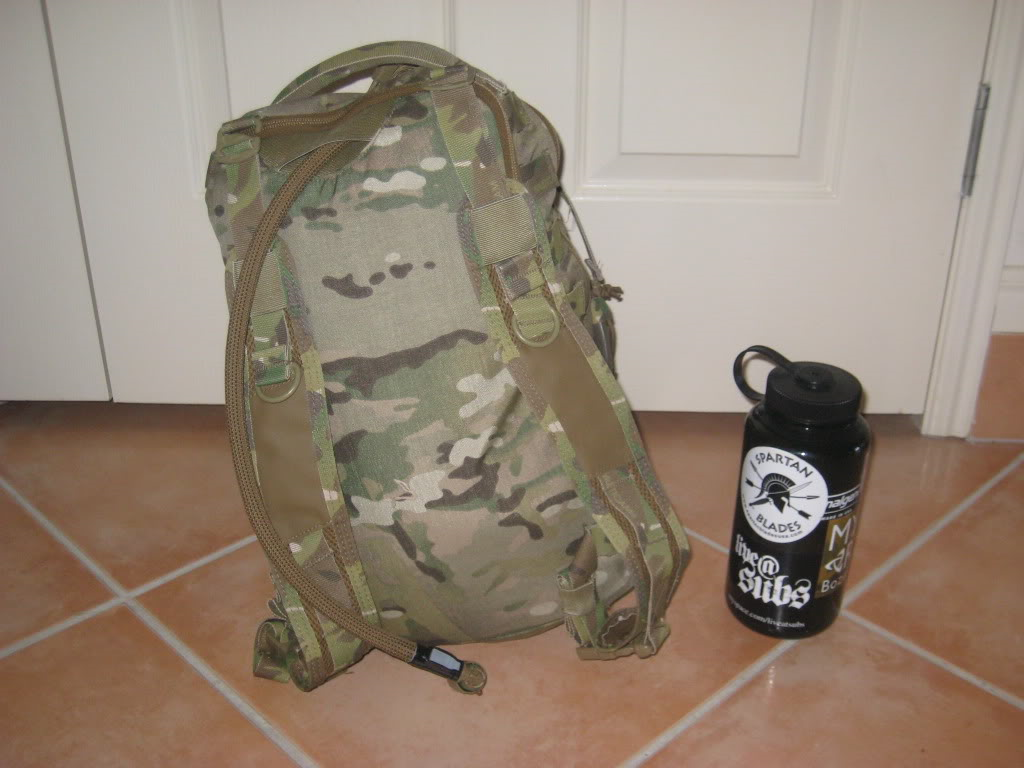
Compared to the Mystery Ranch 3-Day Assault Pack:

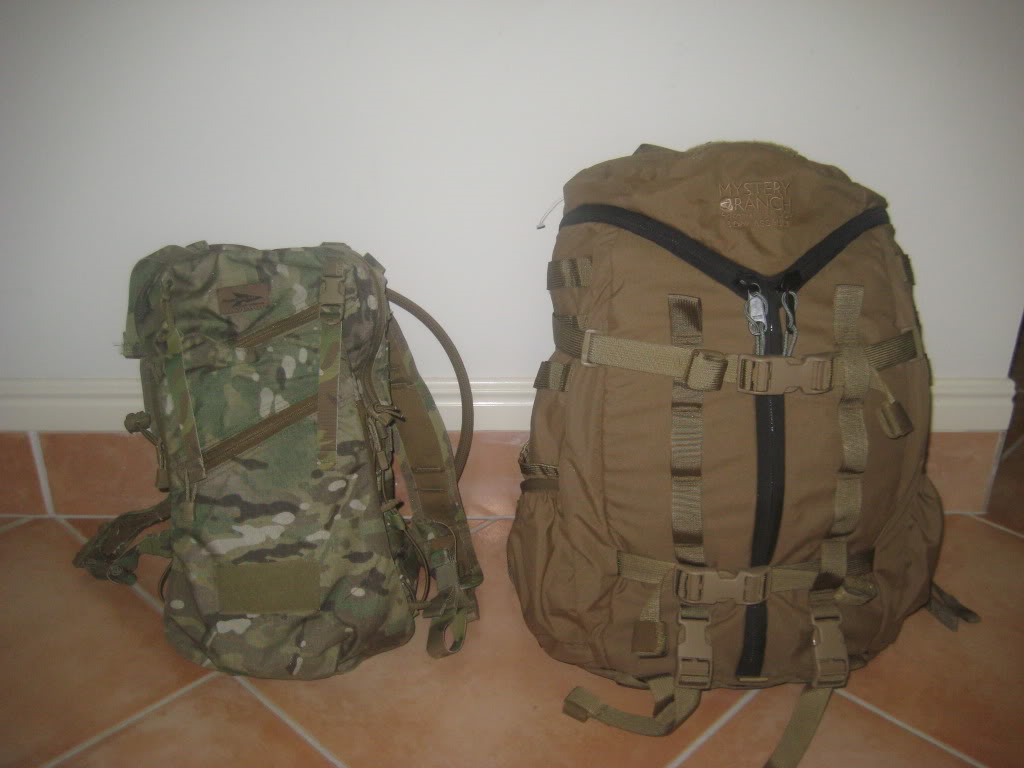
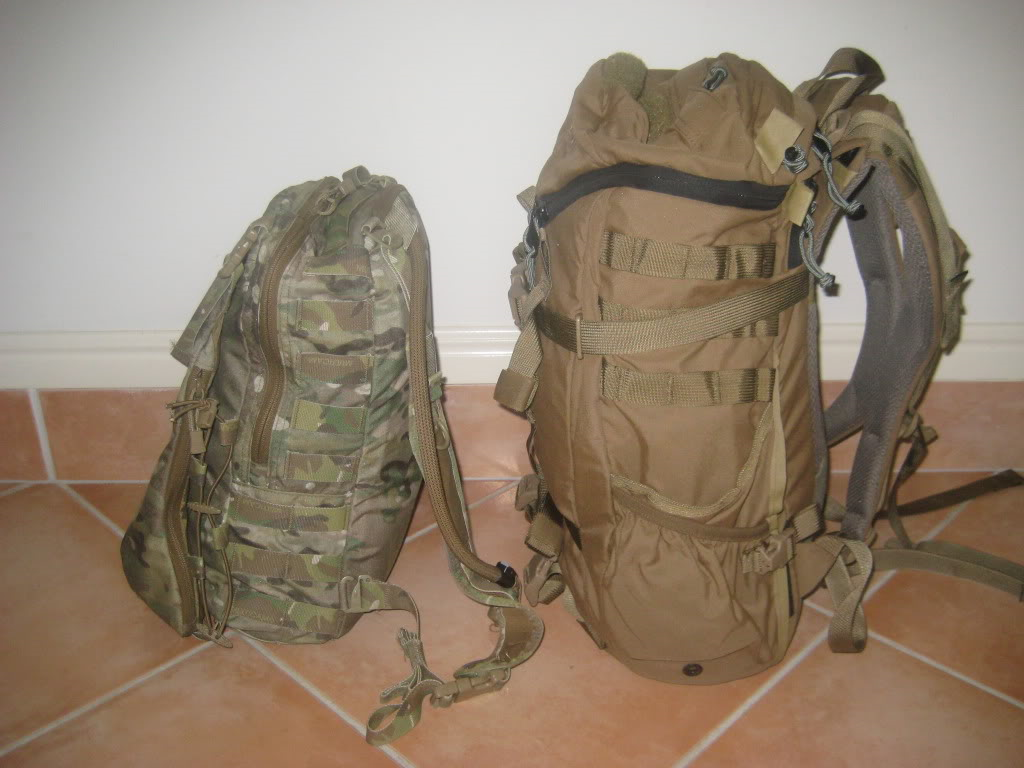
MATERIALS:
500d multicam material
YKK zips
Elastic shock cord
Velcro pile sections
Fastex buckles
SPECIFICATIONS:
Dimensions
Length – 42cm
Width – 22cm
Depth – 13cm
Weight – Unknown
LAYOUT:
HARNESS –
The harness on this assault pack is interesting. It has a removable shoulder strap system that is secured via large G-hooks.
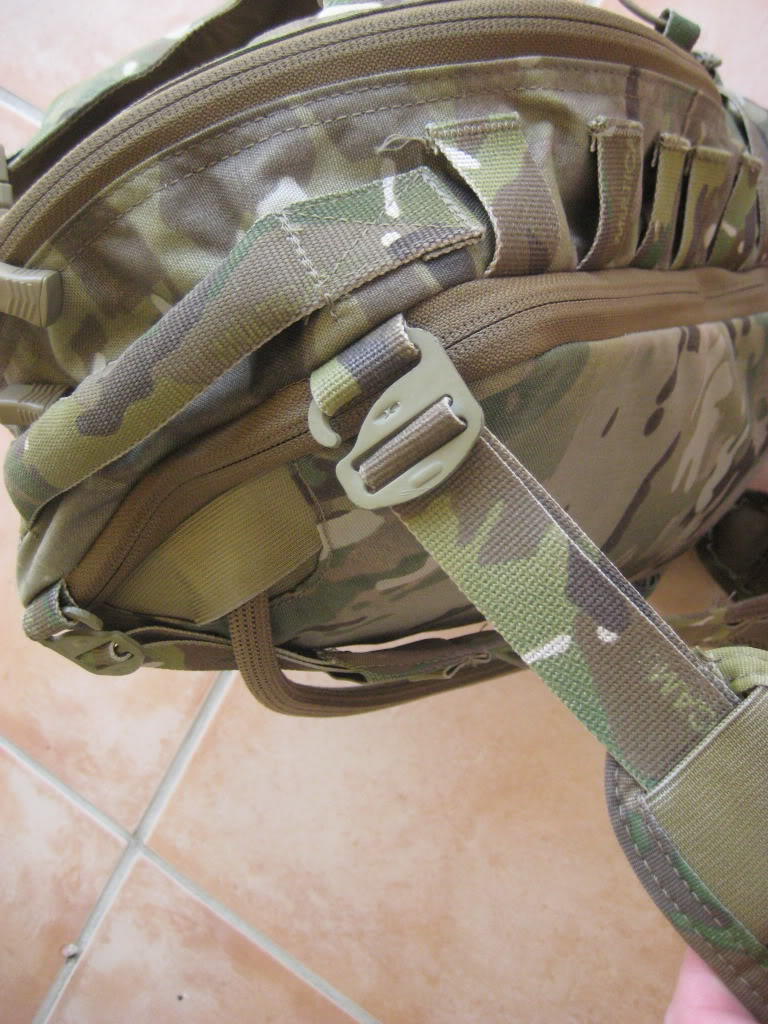
The lightweight shoulder straps are made from a double layer breathable mesh material that keeps the weight down, whilst still retaining strength. Steel rings to hang radio handsets are fitted, there’s also elasticated sections to route hydration bladder hoses through. There’s also a rubberised material square on each harness strap to aid in gripping and stabilising a rifle butt when shouldered. These straps are tensioned at the top via the G-hooks and with fastex buckles at the bottom for easy adjustment and dropping of the pack.

There is no sternum strap on the shoulder harness, although it looks like one could be fitted if that’s a requirement. I find it’s often a 50:50 option on whether I use a sternum strap on small packs like this. If in a hurry, I often won’t bother using it. Or, if the load sits funny on me, then I may forego it as well.
The large G-hooks that the straps are secured to the pack are quite interesting. They allow the harness straps to be easily added or removed, for wear as an independent pack, or even be configured as a single strap sling bag.
It took me a moment to realise where I’d seen these G-hooks before. Then it struck me that I’ve seen smaller versions of them on women’s bras. More specifically, there are some models that have removable straps so that they can be worn with strapless frocks. Since I’ve been shanghaied by my fiancée into fitting and removing these straps when getting ready for outings, I know that this an easy task.
These G-hooks allow the harness straps to be easily attached, and also allow the ECP to be attached to an armour carrier with ease. When wearing combat body armour, shoulder straps can often get in the way, and not sit properly due to the added bulk. By removing the shoulder straps, and attaching the ECP directly to the armour carrier, this simplifies life for the wearer.
The back of the pack has a section of rubberised material at the bottom to prevent wear through when fully loaded.
RUCKSACK –
The rucksack comes in two parts.
The main ruck is a similar size to the Kifaru E&E pack (reviewed elsewhere).
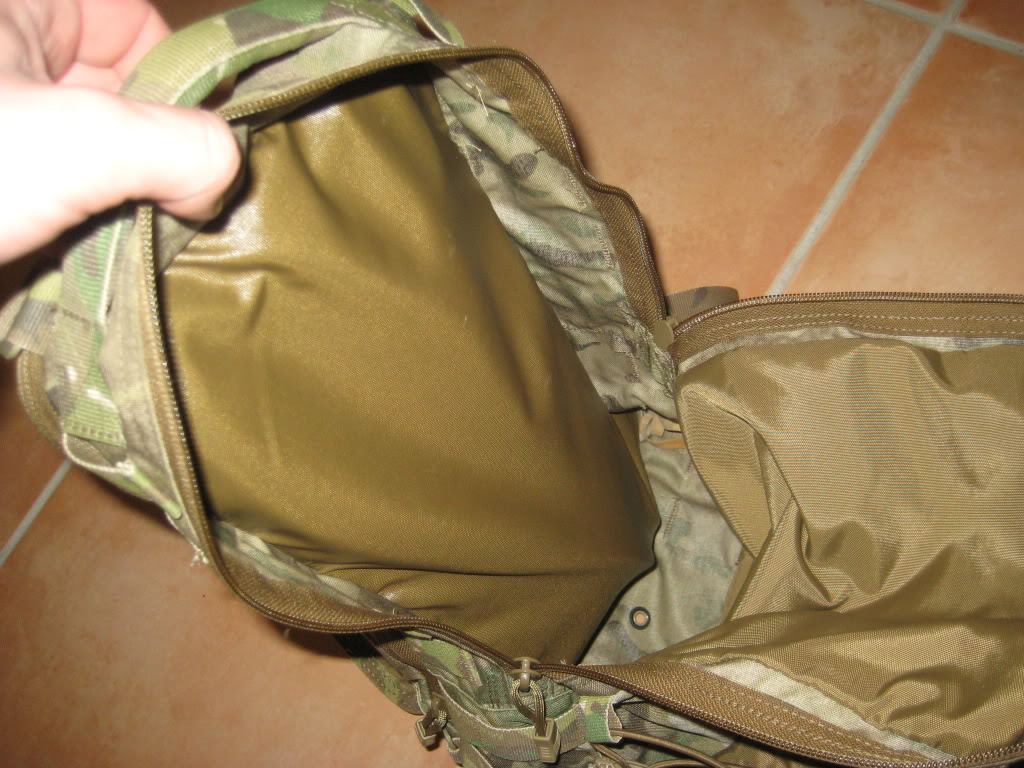
Against the back is a large, entire body length pouch, secured by a three quarter zip that holds the Source hydration bladder. There is an elasticated port at the top allowing the hydration hose to be fed outside. At the top of the pouch is a Velcro loop to secure the hydration bladder. The area has a foam layer to soften the impact against the wearer, increasing comfort when worn stand-alone sans armour. I believe that a frame sheet could be inserted into this space if required. It could also be useful for carrying such things as unused maps and other documentation.

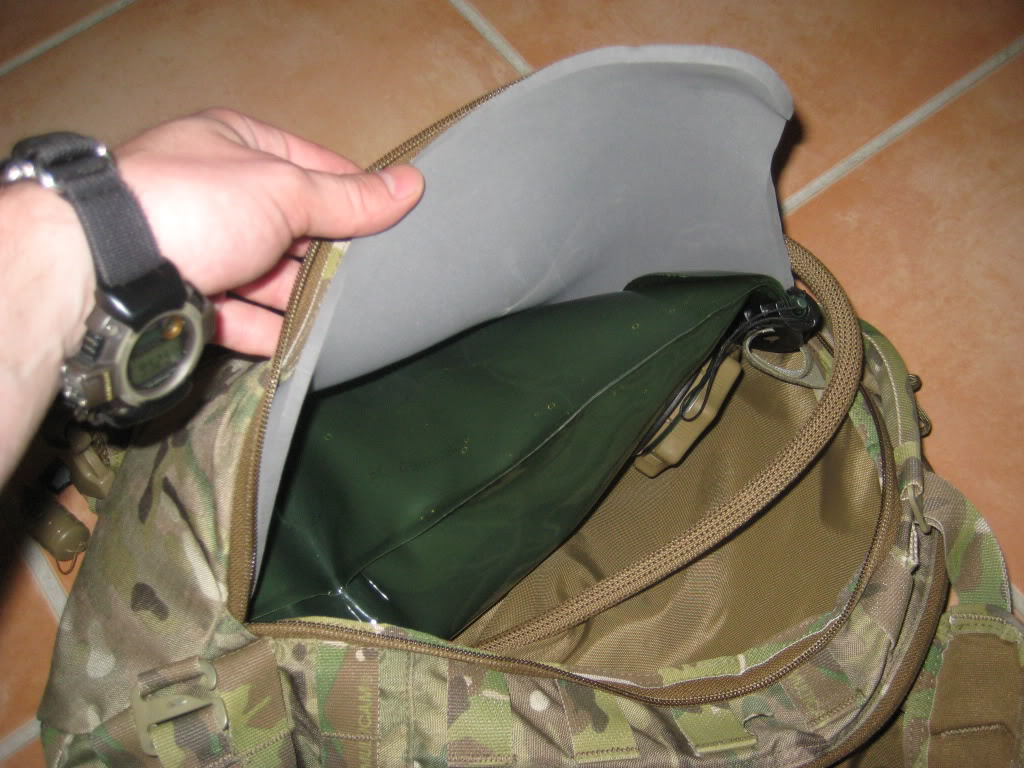
The main compartment is secured via double zip pull clamshell type opening. Strangely, there is no fastex clips or other means to relieve the tension on this main zip if loaded up. Care should be taken then, to not overload the main compartment.
There is a zippered compartment for sundry items on the main lid of this compartment.
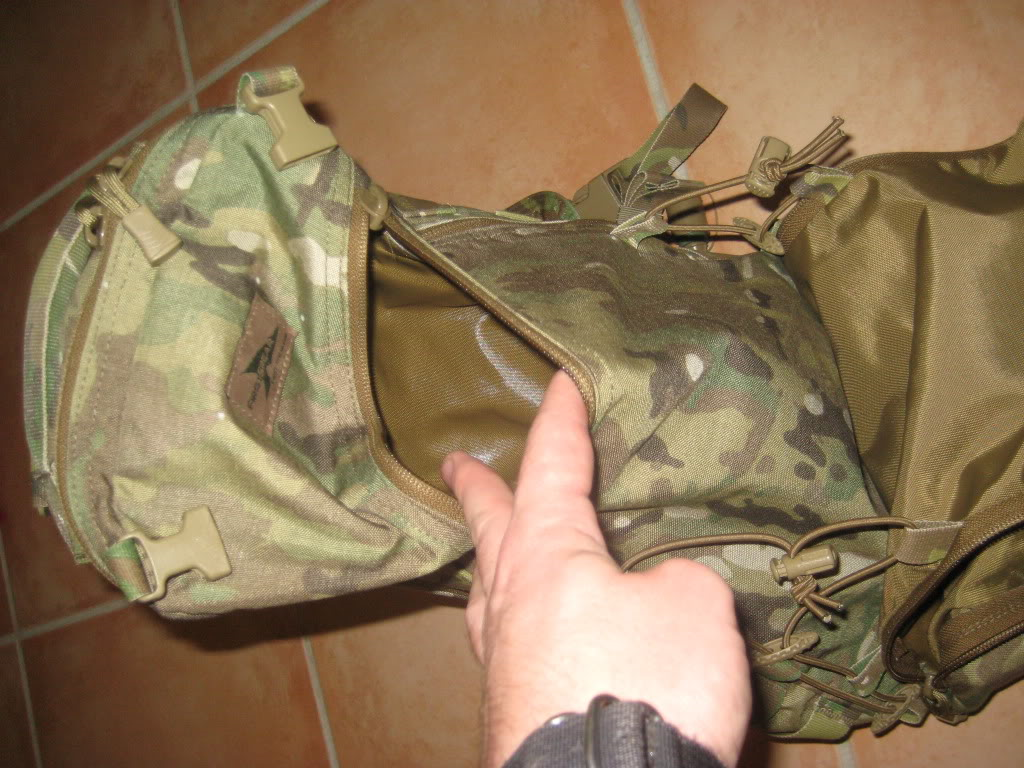
The external surface of the main ruck has PALS webbing on the sides and bottom to allow pouches to be added. This is a small amount of PALS to allow attachment of such things as extra magazine pouches, grenades (smoke especially) and other smaller admin items.
At the top is a drag handle made of tubular webbing. Like a lot of high end drag handles, it has a filler material to prevent weight cutting into the wearer’s hand. Unlike a lot of other items on the market, this filler material is not a rubber or plastic tube; it appears to be rubber beads. It feels slightly odd, and I would imagine that there will be a generation of diggers fondling the drag handle at idle times for the unusual sensation it gives.
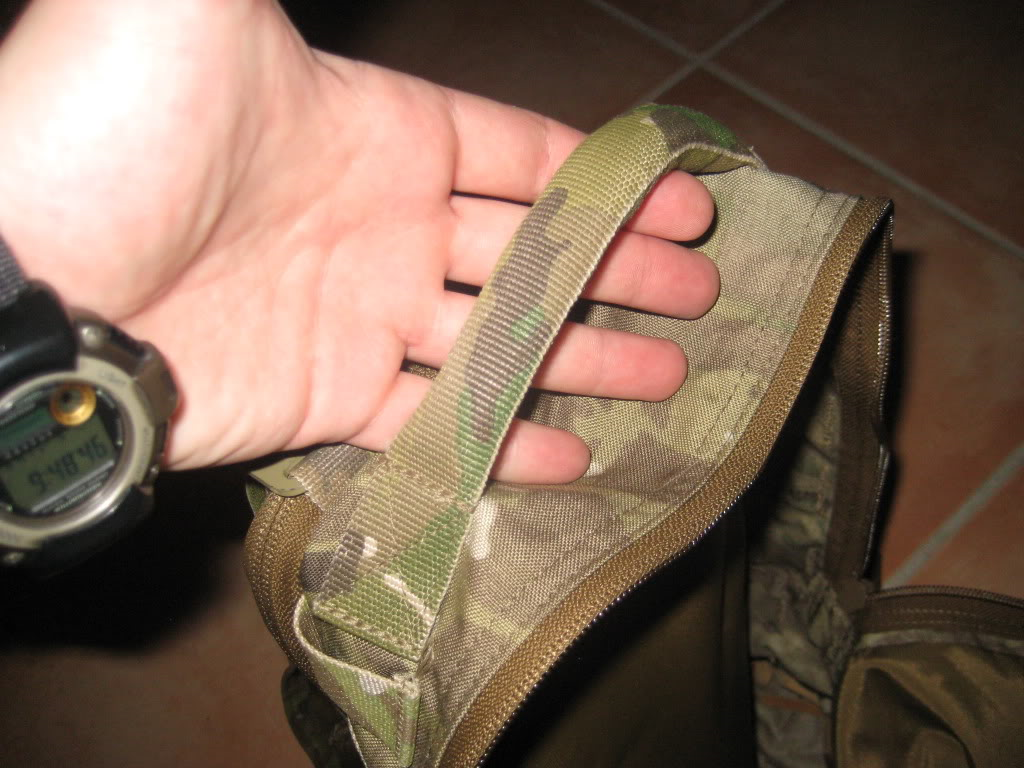
There is also a series of fabric loops to allow attachment of the second part of the rucksack – a removable beaver tail.
Shock corded into place at the bottom, and secured with fastex clips at the top, the tension of the beaver tail can be adjusted to suit the object carried.
It holds a Kevlar helmet quite well. It could hold other sized items, such as respirators or extra clothing as well.

The beaver tail is a multi-layer affair. This means that it has ambidextrous access zips to use the internal area of the beaver tail for storage. Within this space is elasticated daisy chain. The manufacturer suggests that these daisy chains could be used for flashbangs and smoke grenades.
The external surface of the beaver tail has a velcro pile square for IFF and morale patches.

ACCESSORIES –
A Source water bladder was provided with the ECP.
I was impressed with the latest version that Source is putting out. Most of the water bladders I’ve used previously have been problematic with trying to fill the device when mounted within a pack. Trying to get the bladder accessible to pour water into it can be an exercise in frustration and swearing. The new Source bladder has a series of quick release valves to allow the water bladder to be easily removed from the pack, and just as easily placed back into the pack when full.
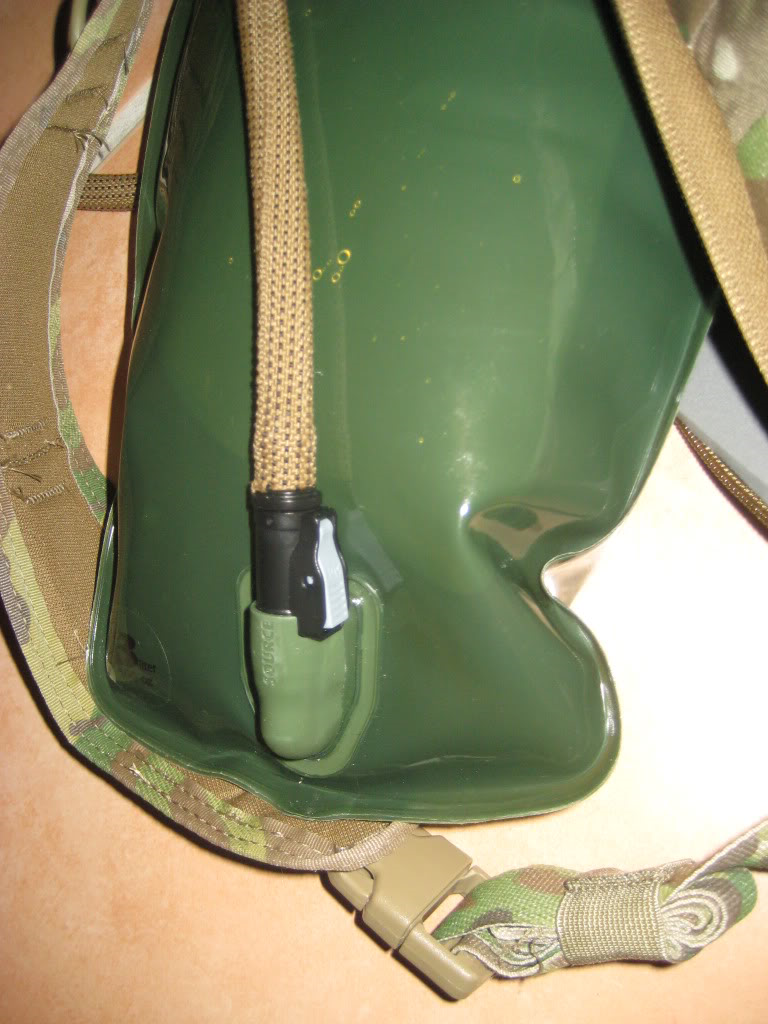
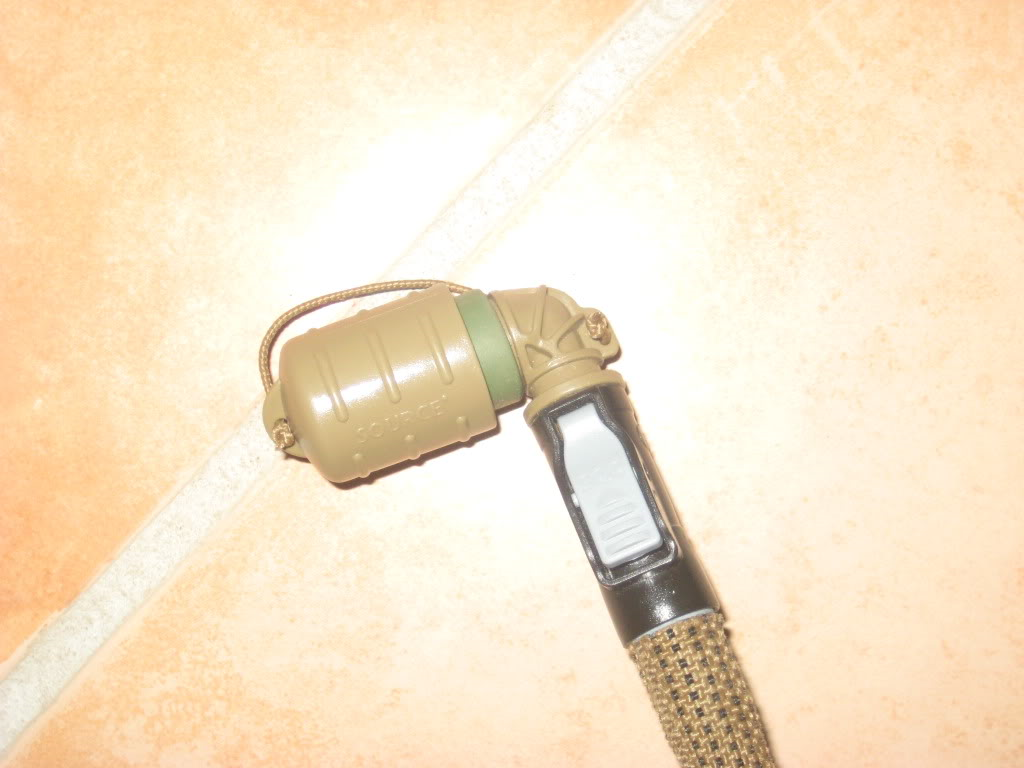
This also has advantages for those inevitable moments in life when equipment breaks. If a single component on the hydration system fails, then that component can be immediately replaced without having to replace the entire shebang. I’m also hearing that Source has this system to allow different filling options depending on circumstances.
Other accessories include double-ended G-hook straps to allow attachment of the ECP to an armour carrier. For some reason, my review pack didn’t have these attachment straps. Instead, I seem to have been given a double issue of fastex clipped straps. I’m not sure if this was a factory or supplier error.
PERSONAL ASSESSMENT:
It’s pretty obvious to me that this ECP was designed for very specific applications.
To my limited eye, it seems to be intended to carry only a small amount of kit for the length of a patrol for a day or so.
I’m informed that this is also intended as a competitor to the Eagle Yote pack, being able to be worn independently, and attached to the armour carrier.
It would seem that the stand-alone shoulder harness is really only for secondary use, since the G-hooks to enable the ECP to be attached to armour carriers is intended as it’s primary method of carriage.
The size of the ECP is well within the shoulders, so that manoeuvrability within tight confines like vehicles and buildings are as unimpeded as possible.


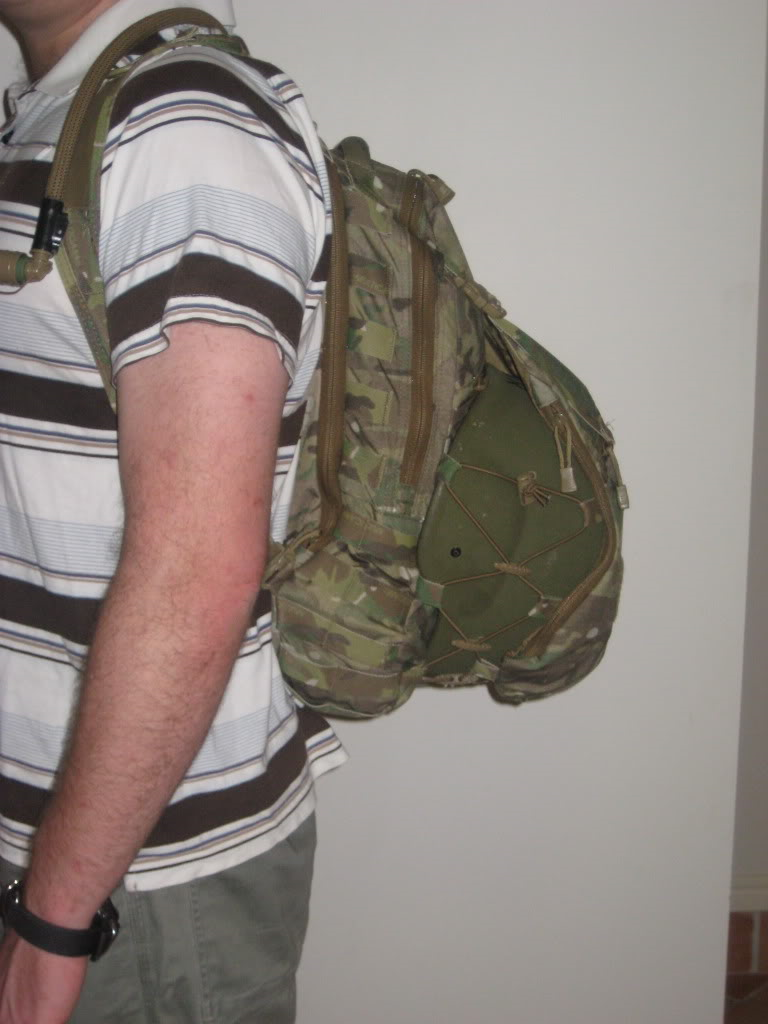
I’ve managed to wear this little pack loaded up with a SORD smock, spare ammunition, first aid, some rations and other assorted typical kit. I dragged it up Castle Hill in Townsville a couple of times and on a couple of short day walks to get a feel for this design. Unfortunately, due to that grown-up concept called “work” I haven’t been able to take it field properly.
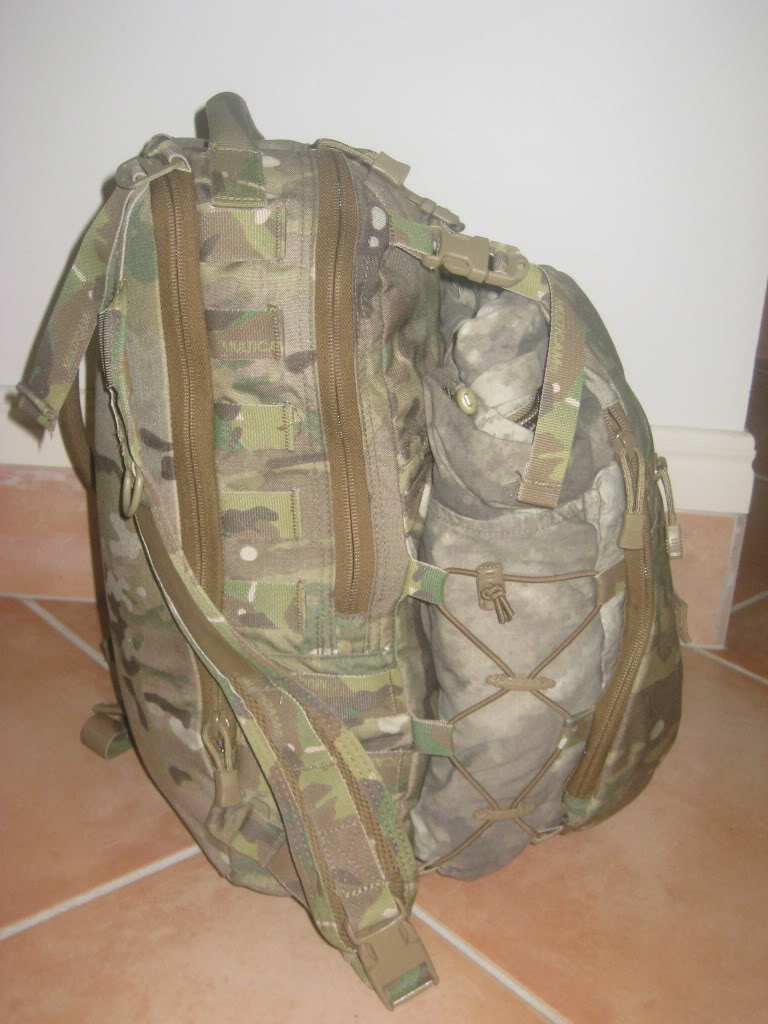
I’ve also been unable to test this pack being worn with armour carriers, since I don’t possess any at the moment. So I’m unable to speak about this aspect of the ECP.
PROS –
I like the adaptability of the harness for being able to convert the ECP to wear with armour, as a stand-alone pack with straps or a single strap sling bag.
The detachable beaver tail is another nice idea. If need be, it can be completely removed to allow the ECP to be used as a relatively snag-free E&E bag like the Kifaru E&E pack.
CONS –
The shoulder straps on this sample seem to slip through the G-hooks too easily whilst under a very mild load. It would seem the main culprit here is the printed multicam tape interfacing with the G-hook. I would imagine that different colours would be less slippery than the multicam version. This remains to be examined further. Further improvement may need to be made to the G-hook as well to improve it’s “bite” on the running end of webbing tape.
When filled, it was noticeable that the Source bladder stole volume from the main pack compartment and detracted from the stability of the pack against the body. This may not be a major problem when lightly loaded, but since most of the gear I’ve had to carry over the years tends to be dense and heavy for its bulk. This could be problematic for some heavier loads.
The beaver tail is a great idea to stow such items as helmets, respirators, clothing and other mission essential equipment, I think it has a deficiency. Such things as these beaver tails tend to be used in a quick dump pouch type application for captured items or other intelligence when in a hurry, this beaver tail won’t retain smaller items like water bottles – they tend to fall through the shock cord.
Whilst being worn, I thought the shoulder straps could have benefitted from having a sternum strap, like most of the Camelbak hydration bladder range. One could be cannibalized from another source if need be, but I thought this was a bit odd by not having it in the first place.
SUMMARY:
A nice little pack from a new company.
It is designed primarily to be attached to an armour carrier and able to be quickly mounted or dismounted, but the stand-alone shoulder harness is slightly fiddly.
Posted in Military, Military Gear, Packs & Webbing, Short Trip by 22F with no comments yet.
Leave a Reply